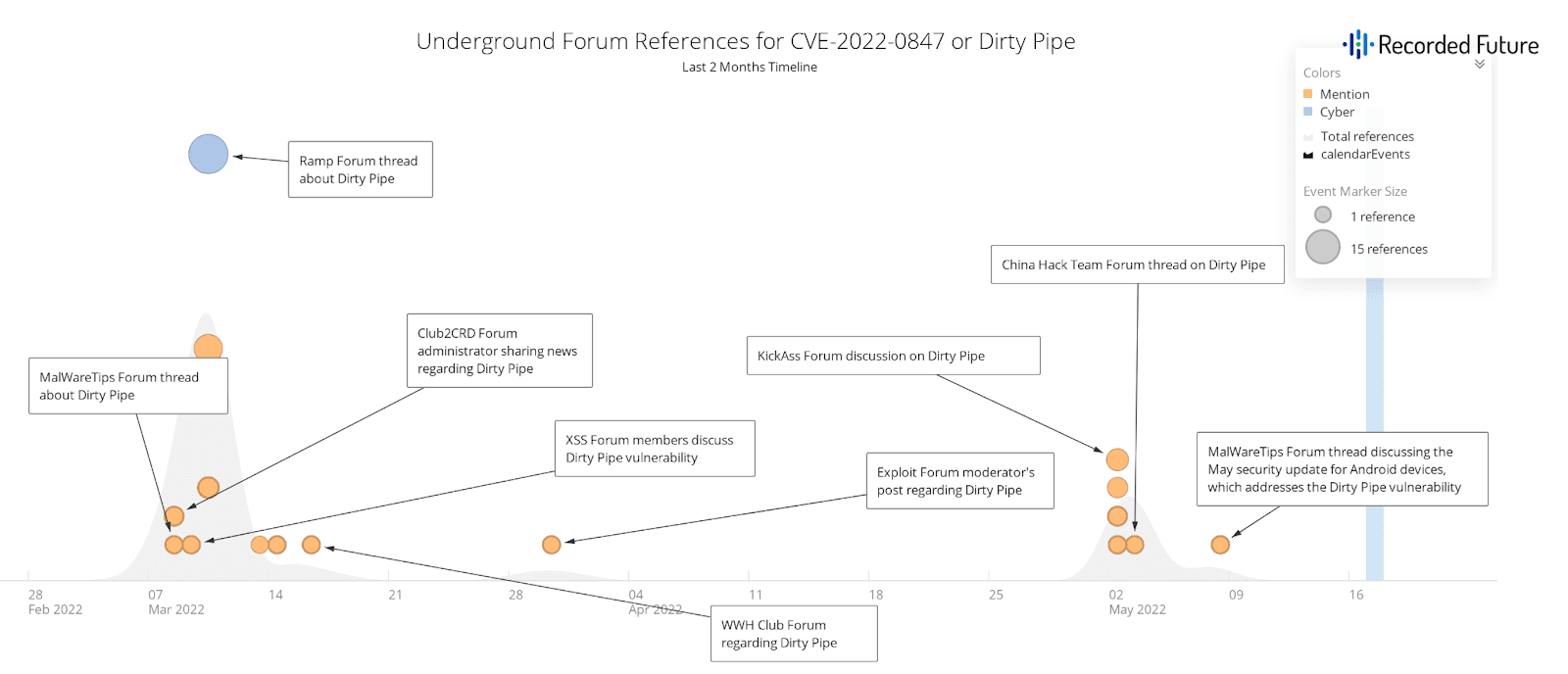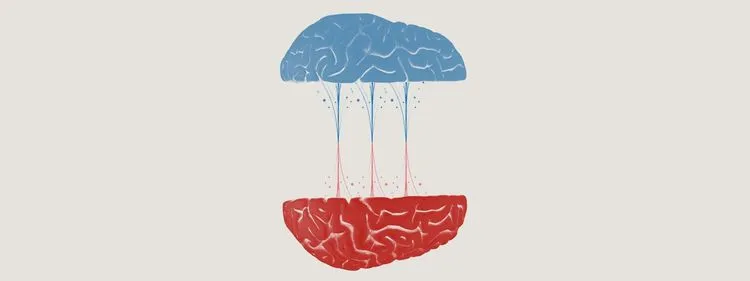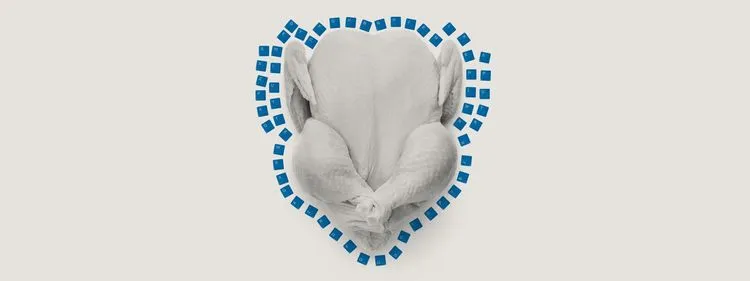Vulnerability Spotlight: Dirty Pipe

Editor’s Note: The following post is an excerpt of a full report. To read the entire analysis, click here to download the report as a PDF.
This report provides an overview, technical analysis, and mitigations for CVE-2022-0847. Sources include the Recorded Future® Platform, GitHub, and open-source reporting. The intended audience for this report is defenders and analysts who are interested in how CVE-2022-0847 exploits work, as well as current mitigations that can be employed.
Executive Summary
CVE-2022-0847 (Dirty Pipe) is a Linux kernel vulnerability that was disclosed in early March 2022. The vulnerability was introduced in Linux kernel version 5.8 and allows for local privilege escalation via arbitrary file overwrites. An example proof-of-concept (POC) exploit was released with the disclosure, and since then several other POCs have been published on GitHub. The public exploits are reliable and only require a small number of prerequisites to work, such as having read permissions to a targeted file. Given the nature of this vulnerability, there are many different files that can be targeted for privilege escalation; therefore, this report highlights the techniques used by existing POC exploits. CVE-2022-0847 was patched in Linux kernel versions 5.16.11, 5.15.25, and 5.10.102, and all major Linux-based distributions have incorporated patches into their package repositories. Organizations should apply the recommended patches as soon as possible.
Key Observations
- CVE-2022-0847 existed in the wild for roughly 2 years, although there is no evidence that it was exploited prior to its public disclosure.
- Multiple POC exploits are publicly available, making this vulnerability easy to exploit and accessible to unsophisticated attackers.
- Exploits for CVE-2022-0847 are reliable and allow an attacker to gain root access when run on a vulnerable system. The root access enables the threat actor to perform administrative tasks such as reading sensitive files, installing malicious software, impersonating users, and potentially moving laterally throughout the network.
- The only mitigation for CVE-2022-0847 is to apply security patches, which are available for all major Linux distributions.
- Recorded Future has observed over 90 underground forum references to CVE-2022-0847 since it was disclosed, illustrating a general interest and potential intent to exploit the vulnerability in future campaigns.
Background
CVE-2022-0847 is a privilege escalation vulnerability in the Linux kernel that allows arbitrary files to be overwritten if the attacker has read access to the file. The vulnerability was introduced into the Linux kernel in version 5.8 and existed for roughly 2 years before being discovered and patched. It was discovered by Max Kellermann, who gave it the nickname “Dirty Pipe” due to its similarities with CVE-2016-5195 (aka “Dirty Cow”). Kellermann identified the vulnerability on February 19, 2022, and initiated a coordinated vulnerability disclosure the following day by submitting a bug report, POC exploit, and patch to the Linux kernel security team. Once patches were in place, the vulnerability was publicly disclosed on March 7, 2022. At this time, there is no evidence that CVE-2022-0847 was exploited in the wild prior to its disclosure.
The bug itself is rated high (7.8) on the CVSS 3.0 scale. Given the widespread nature of Linux-based operating systems (OS), the vulnerability affects many devices other than just desktops and servers running Linux-based OSes. Vulnerable devices include a wide range of internet of things (IoT) devices, routers, and Android tablets and phones. It is not possible to remotely exploit the vulnerability; however, it could be chained with a remote code execution (RCE) vulnerability to be used without local access. Additionally, not all devices will be vulnerable as Linux kernel versions prior to 5.8 are not affected, as well as any kernel versions that have been updated to the patched versions.
In a search of underground and dark web sources, we identified numerous discussions pertaining to CVE-2022-0847. While it is uncommon for threat actors to publicly disclose their intentions of targeting specific organizations using a particular CVE, a general interest shared by dark web forum members indicates threat actors’ intent to use CVE-2022-0847 in malicious campaigns. We identified 120 references to CVE-2022-0847 across multiple dark web forums over the past 2 months, as shown in Figure 1 below.
 Figure 1: References for CVE-2022-0847 or Dirty Pipe on dark web forums (Source: Recorded Future)
Figure 1: References for CVE-2022-0847 or Dirty Pipe on dark web forums (Source: Recorded Future)
Editor’s Note: The following post is an excerpt of a full report. To read the entire analysis, click here to download the report as a PDF.
Related News & Research



